
Scouting, also known as the Scout Movement, is a worldwide youth movement employing the Scout method, a program of informal education with an emphasis on practical outdoor activities, including camping, woodcraft, aquatics, hiking, backpacking, and sports. Another widely recognized movement characteristic is the Scout uniform, by intent hiding all differences of social standing in a country and making for equality, with neckerchief and campaign hat or comparable headwear. Distinctive uniform insignia include the fleur-de-lis and the trefoil, as well as merit badges and other patches.

Sir Gawain and the Green Knight is a late 14th-century chivalric romance in Middle English. The author is unknown; the title was given centuries later. It is one of the best-known Arthurian stories, with its plot combining two types of folk motifs: the beheading game, and the exchange of winnings. Written in stanzas of alliterative verse, each of which ends in a rhyming bob and wheel; it draws on Welsh, Irish, and English stories, as well as the French chivalric tradition. It is an important example of a chivalric romance, which typically involves a hero who goes on a quest which tests his prowess. It remains popular in modern English renderings from J. R. R. Tolkien, Simon Armitage, and others, as well as through film and stage adaptations.

The Bloomsbury Group—or Bloomsbury Set—was a group of associated English writers, intellectuals, philosophers and artists in the first half of the 20th century, including Virginia Woolf, John Maynard Keynes, E. M. Forster and Lytton Strachey. This loose collective of friends and relatives was closely associated with the University of Cambridge for the men and King's College London for the women, and they lived, worked or studied together near Bloomsbury, London. According to Ian Ousby, "although its members denied being a group in any formal sense, they were united by an abiding belief in the importance of the arts." Their works and outlook deeply influenced literature, aesthetics, criticism, and economics as well as modern attitudes towards feminism, pacifism, and sexuality. A well-known quote, attributed to Dorothy Parker, is "they lived in squares, painted in circles and loved in triangles".
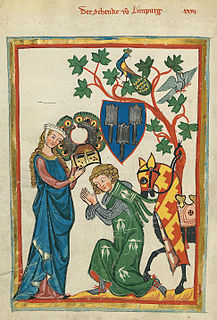
Chivalry, or the chivalric code, is an informal and varying code of conduct developed between 1170 and 1220. It was associated with the medieval Christian institution of knighthood; knights' and gentlemen's behaviours were governed by chivalrous social codes. The ideals of chivalry were popularized in medieval literature, particularly the literary cycles known as the Matter of France, relating to the legendary companions of Charlemagne and his men-at-arms, the paladins, and the Matter of Britain, informed by Geoffrey of Monmouth's Historia Regum Britanniae, written in the 1130s, which popularized the legend of King Arthur and his knights of the Round Table. All of these were taken as historically accurate until the beginnings of modern scholarship in the 19th century.
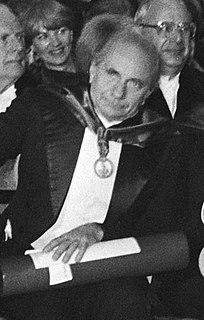
Georges Duby was a French historian who specialised in the social and economic history of the Middle Ages. He ranks among the most influential medieval historians of the twentieth century and was one of France's most prominent public intellectuals from the 1970s to his death.

Sir Kenelm Digby was an English courtier and diplomat. He was also a highly reputed natural philosopher, astrologer and known as a leading Roman Catholic intellectual and Blackloist. For his versatility, he is described in John Pointer's Oxoniensis Academia (1749) as the "Magazine of all Arts and Sciences, or the Ornament of this Nation".

Tristan, also known as Tristram or Tristain and similar names, is the hero of the legend of Tristan and Iseult. In the legend, he is tasked with escorting the Irish princess Iseult to wed Tristan's uncle, King Mark of Cornwall. Tristan and Iseult accidentally drink a love potion during the journey and fall in love, beginning an adulterous relationship that eventually leads to Tristan's banishment and death. The character's first recorded appearance is in retellings of British mythology from the 12th century by Thomas of Britain and Gottfried von Strassburg, and later in the Prose Tristan. He is featured in Arthurian legends, including the seminal text Le Morte d'Arthur, as a skilled knight and a friend of Lancelot.
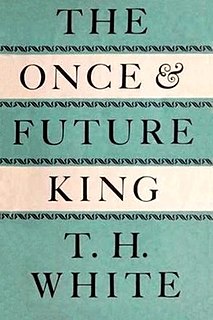
The Once and Future King is first a phrase originating c.1485 that refers to Britain's greatest king - Arthur - and how he will return. It's also a work by T. H. White loosely based upon the 1485 book Le Morte d'Arthur by Sir Thomas Malory. It was first published in 1958. It collects and revises shorter novels published from 1938 to 1940, with much new material.

The Kindred of the Kibbo Kift was a camping, hiking and handicraft group with ambitions to bring world peace. It was the first of three movements in England associated with the charismatic artist and writer John Hargrave (1894–1982). The Kindred was founded in 1920. Some members continued into Hargrave's Green Shirt Movement for Social Credit, which was established in 1931–32, and which became in 1935 the Social Credit Party of Great Britain and Northern Ireland. This was wound up in 1951.

Sir Everard Digby was a member of the group of provincial English Catholics who planned the failed Gunpowder Plot of 1605. Although he was raised in a Protestant household, and married a Protestant, Digby and his wife were converted to Catholicism by the Jesuit priest John Gerard. In the autumn of 1605, he was part of a Catholic pilgrimage to the shrine of St Winefride's Well in Holywell. About this time, he met Robert Catesby, a religious fanatic who planned to blow up the House of Lords with gunpowder, killing James I. Catesby then planned to incite a popular revolt, during which a Catholic monarch would be restored to the English throne.
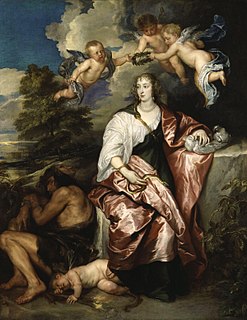
Venetia Anastasia Digby was a celebrated beauty of the Stuart period and the wife of a prominent courtier and scientist, Kenelm Digby. She was a granddaughter of Thomas Percy, 7th Earl of Northumberland. and a great- granddaughter of Edward Stanley, 3rd Earl of Derby.
Kenelm Henry Digby was an Anglo-Irish writer, whose reputation rests chiefly on his earliest publication, The Broad-Stone of Honour, or Rules for the Gentlemen of England (1822), which contains an exhaustive survey of medieval customs. The work was subsequently enlarged and issued (1828–29) in four volumes entitled: Godefridus, Tancredus, Morus and Orlandus. Digby's exposure to Walter Scott's Ivanhoe novels as a youth encouraged him to romanticize the Middle Ages. Broad-Stone contributed to the Young England movement’s feudalist ideology and influenced many of Digby's Cambridge contemporaries. The book inculcated readers with ideas of chivalry and staunch Catholicism and stressed the importance of the heart’s knowledge over intellectual learning by presenting historical figures as role models. Digby's revival of medieval principles helped young men of his day construct their idea of what being a "gentleman" means.

The literary estate of a deceased author consists mainly of the copyright and other intellectual property rights of published works, including film, translation rights, original manuscripts of published work, unpublished or partially completed work, and papers of intrinsic literary interest such as correspondence or personal diaries and records. In academia, the German term Nachlass for the legacy of papers is often used.
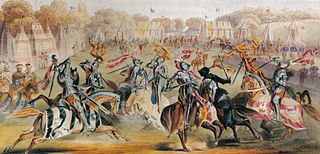
The Eglinton Tournament of 1839 was a reenactment of a medieval joust and revel held in North Ayrshire, Scotland between 28 and 30 August. It was funded and organized by Archibald, Earl of Eglinton, and took place at Eglinton Castle in Ayrshire. The Queen of Beauty was Georgiana, Duchess of Somerset. Many distinguished visitors took part, including Prince Louis Napoleon, the future Emperor of the French.

Mark Girouard is a British architectural writer, an authority on the country house, an architectural historian, and biographer of Sir James Stirling.
Edward Walsingham was an English royalist author, known for his verse of the First English Civil War and Arcana Aulica, often wrongly attributed to Sir Francis Walsingham.
Kenelm Hubert Digby MBE was the proposer of the controversial 1933 "King and Country" debate in the Oxford Union who later became the Attorney General and a judge in Sarawak.

The Eglinton Trophy or Eglinton Testimonial is a Gothic style Sterling silver centrepiece presented by friends and admirers to the 13th Earl of Eglinton to commemorate the medieval re-enactment known as the Eglinton Tournament held at Eglinton Castle, Kilwinning, North Ayrshire in 1839. At 4 foot 8 inch (140 cm) in height and 1600 ounces (45 kg) in weight it is one of the largest and most extravagant trophies of its kind.

Bredon School, formerly Pull Court, is an independent school in Bushley, Worcestershire, England. The house was built for the Reverend Canon E. C. Dowdeswell by Edward Blore between 1831 and 1839. The site is much older and Blore's house replaced an earlier mansion. The Dowdeswells had been prominent in local and national politics since the 18th century, with many serving as members of Parliament. The family sold the house in 1934 to the parents of Richard Seaman, a prominent pre-war racing drive, who lived there until his death in a crash in the 1939 Belgian Grand Prix. In 1962, the court became a school, Bredon School, founded by Lt-Col Tony Sharp and Hugh Jarrett, for the education of boys who had failed the Common Entrance Examination. It remains a specialist school with a focus on educating children with specific learning difficulties, such as dyslexia and dyspraxia.

St Augustine's Church or the Shrine of St Augustine of Canterbury is a Roman Catholic church in Ramsgate, Kent. It was the personal church of Augustus Pugin, the renowned nineteenth century architect, designer, and reformer. The church is an example of Pugin's design ideas, and forms a central part of Pugin's collection of buildings in Ramsgate. Having built his home, Pugin began work on St Augustine's in 1846 and worked on it until his death in 1852. His sons completed many of the designs. This is the site where Pugin is buried, in a vault beneath the chantry chapel he designed, alongside several members of his family.